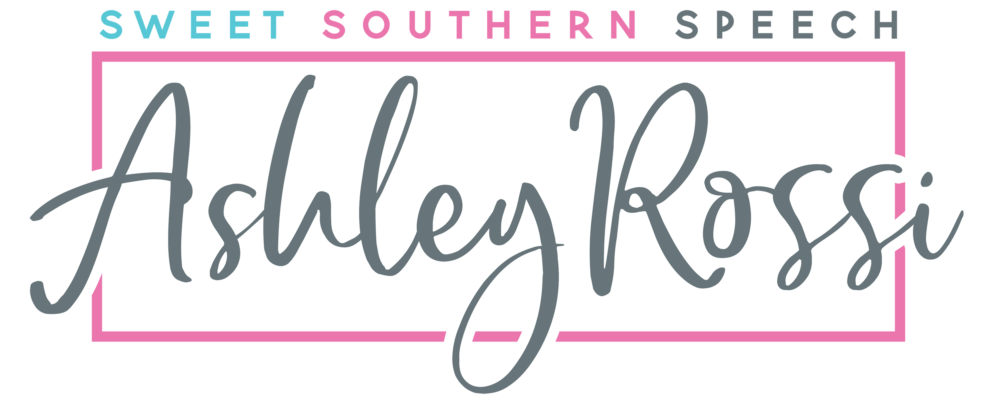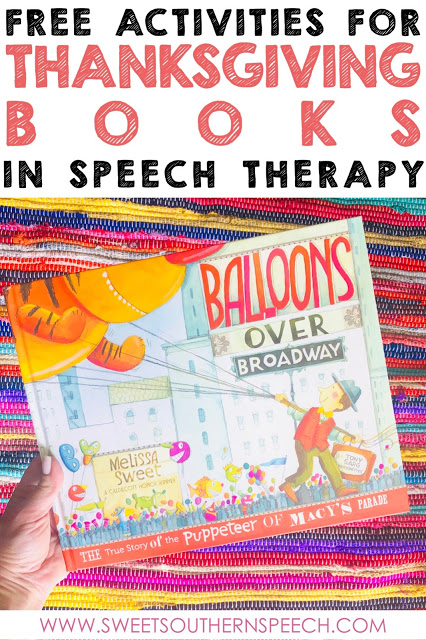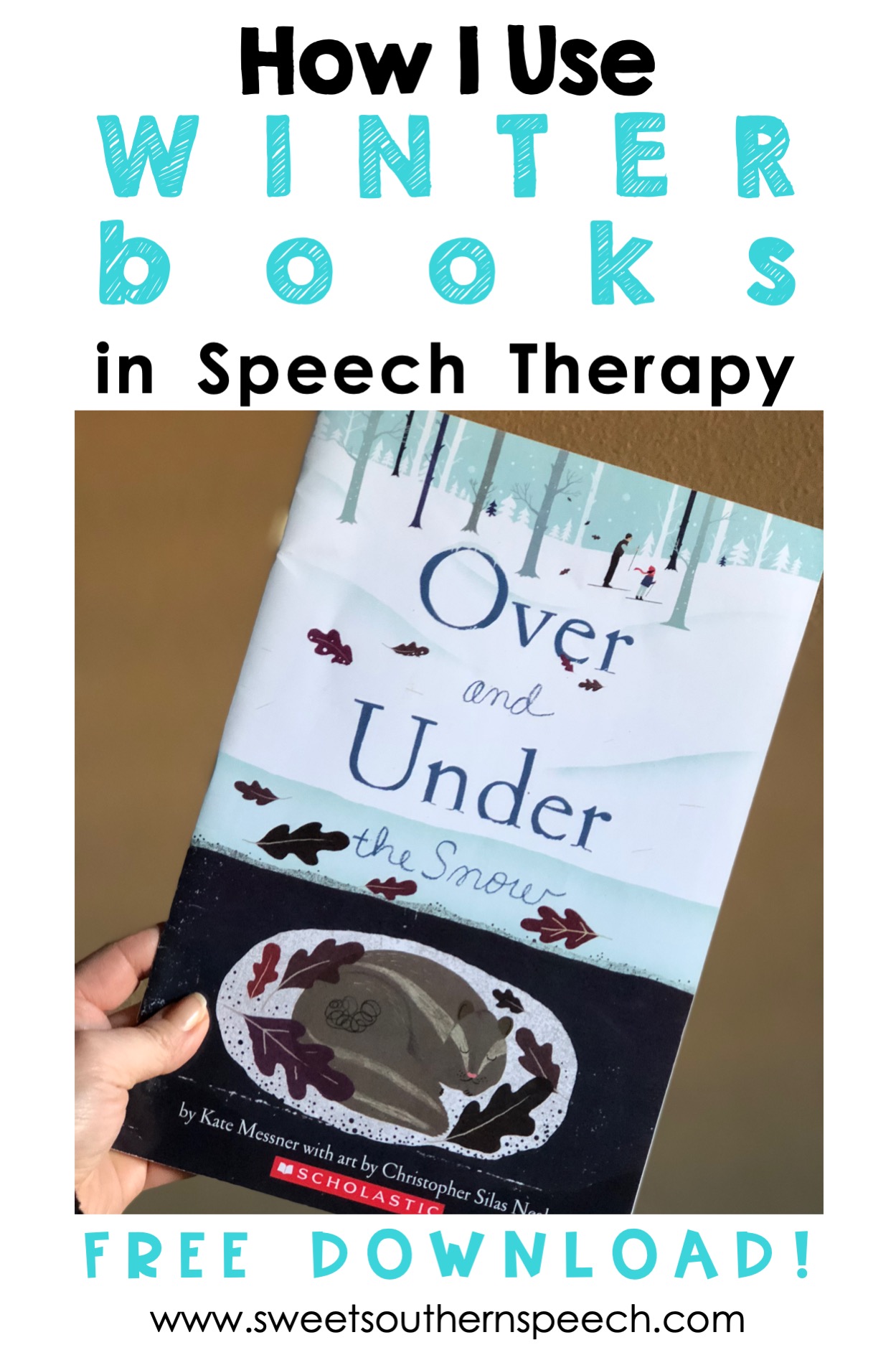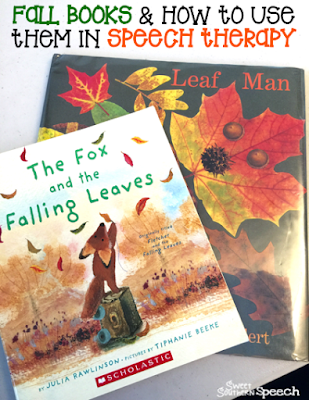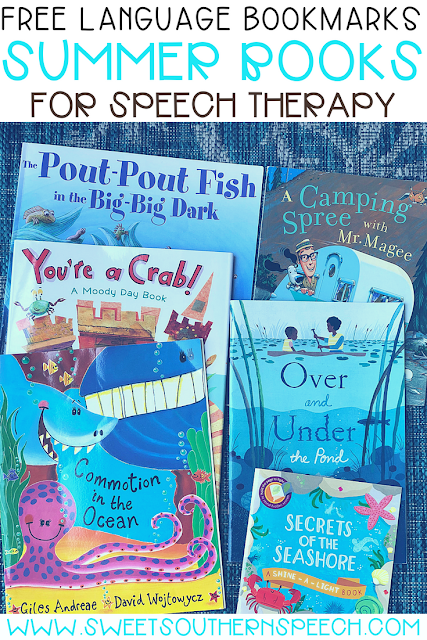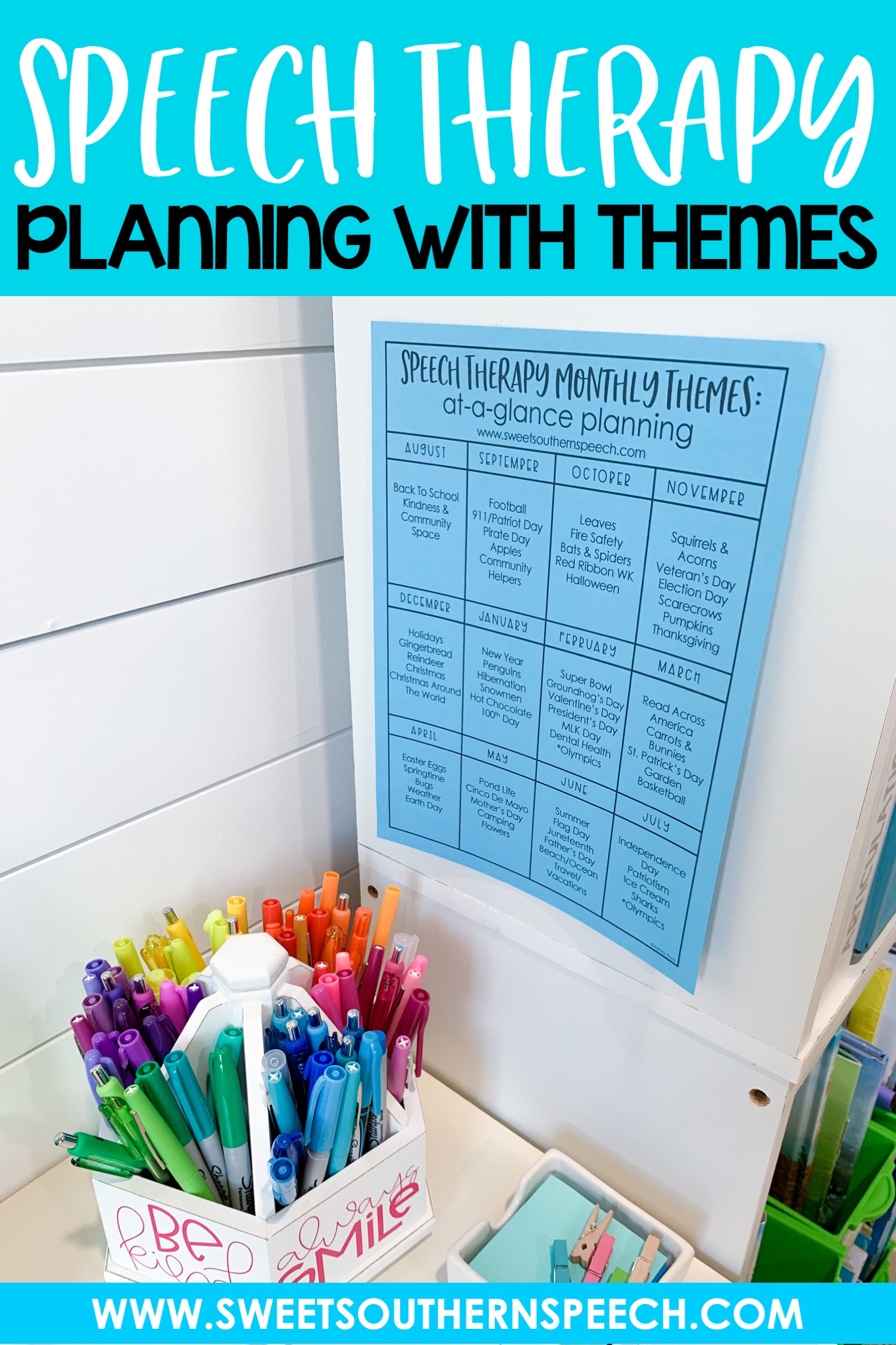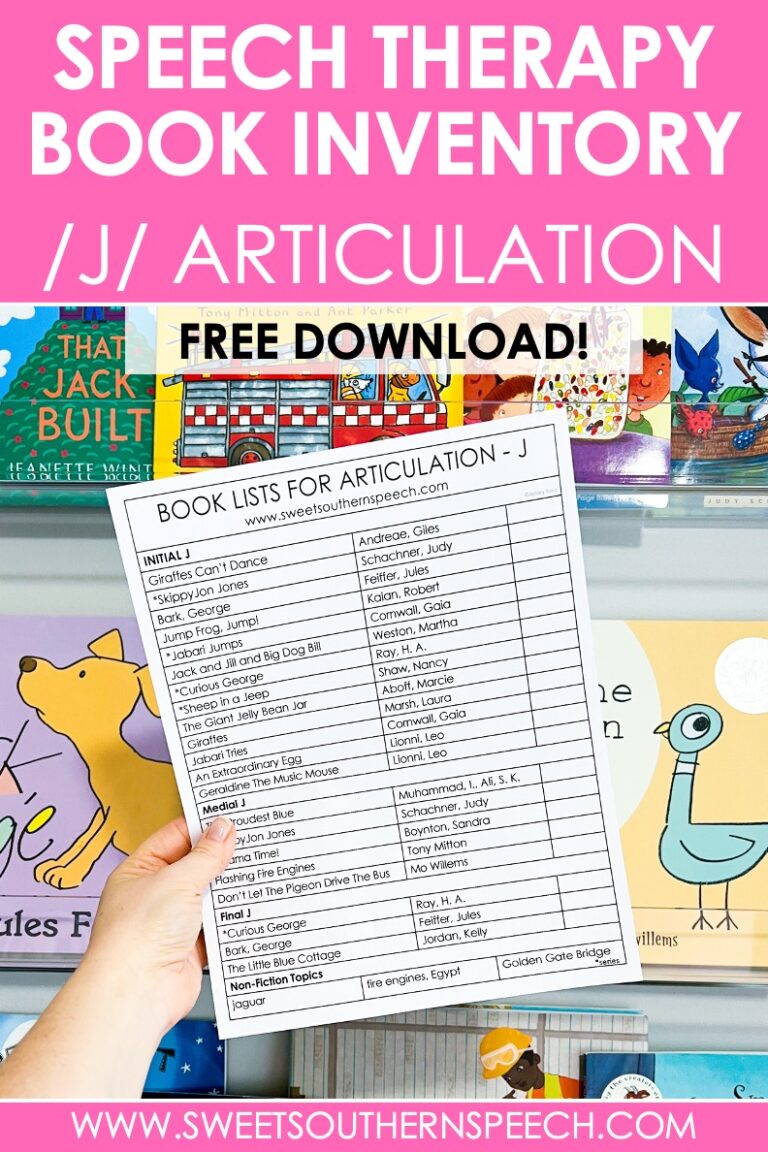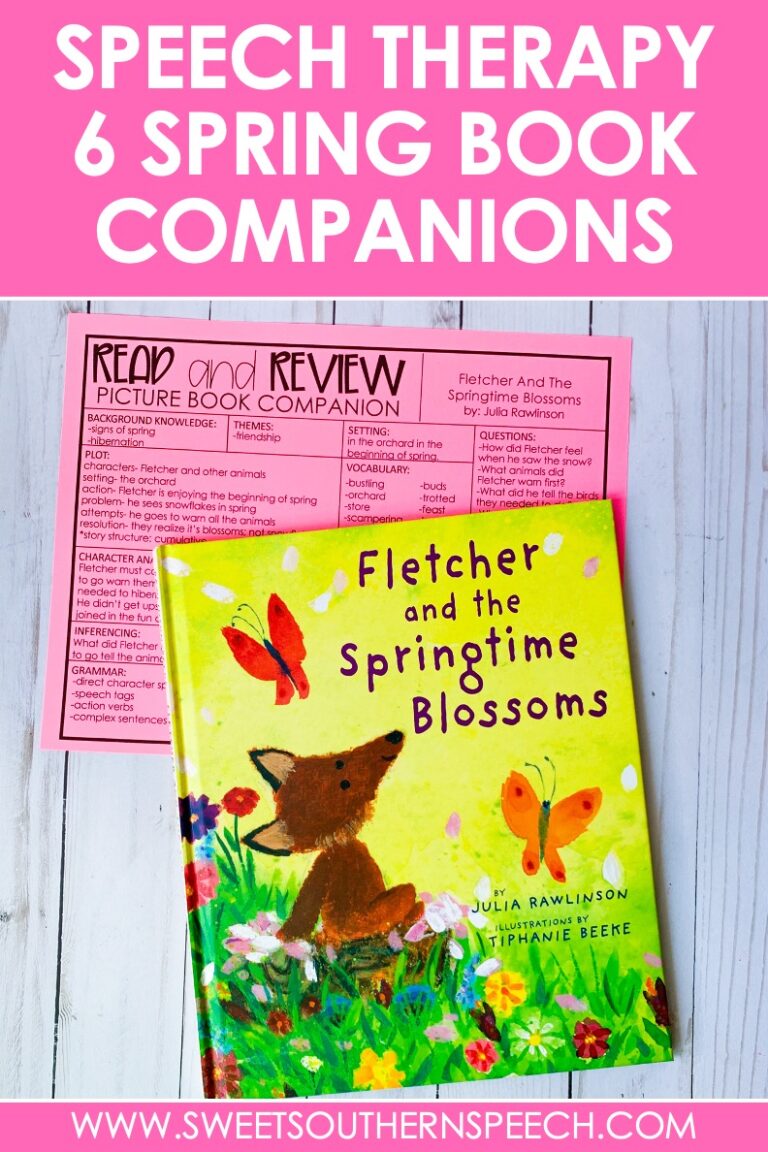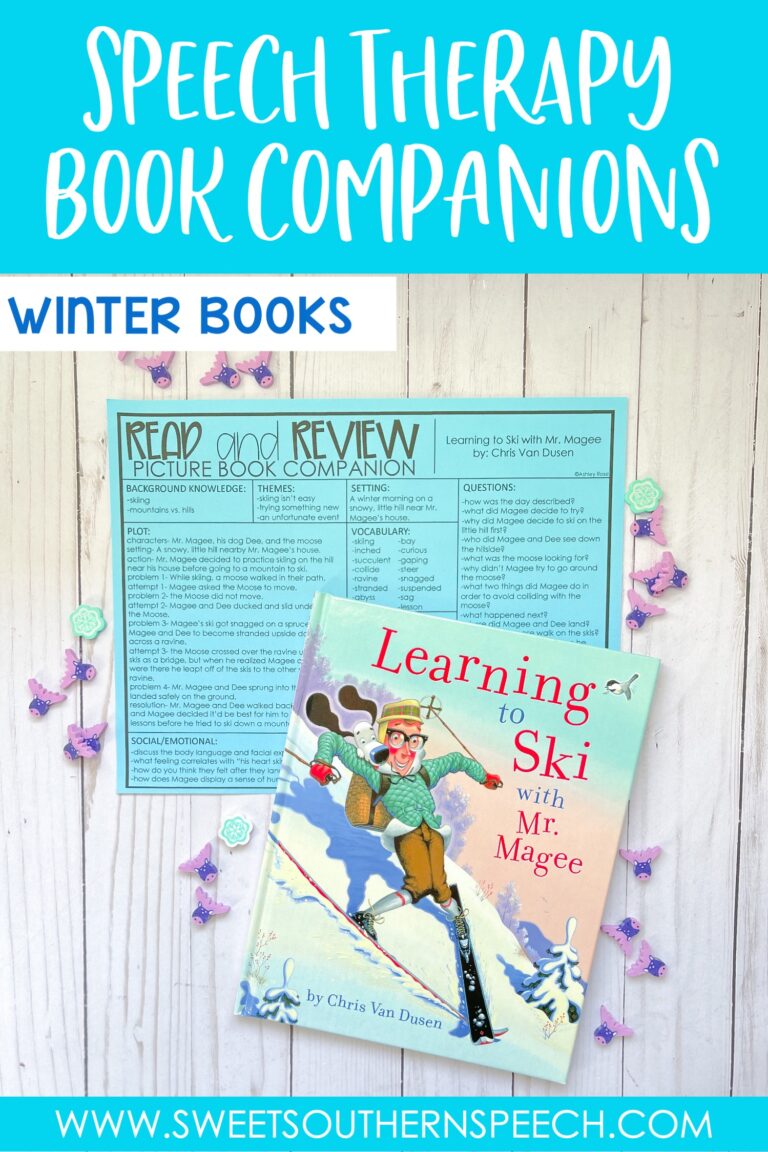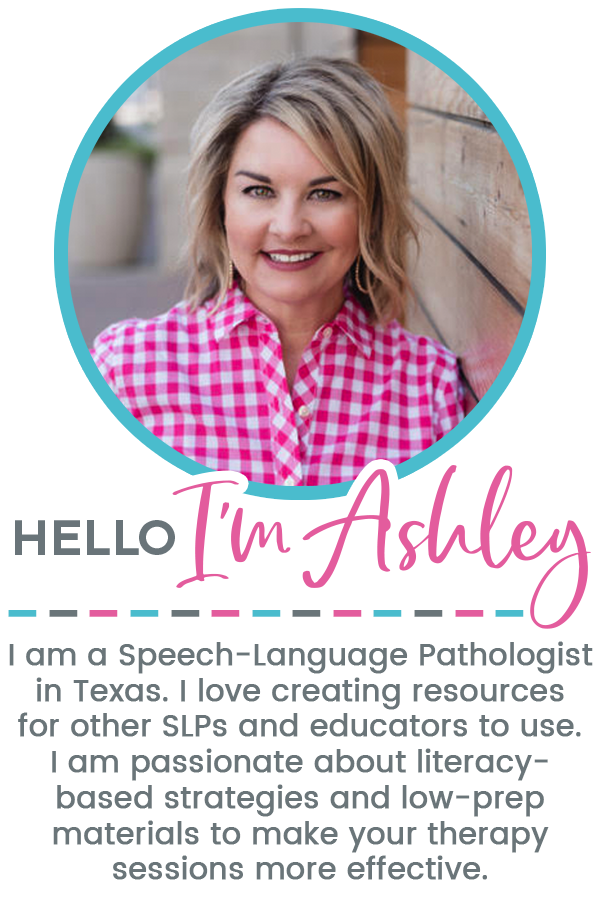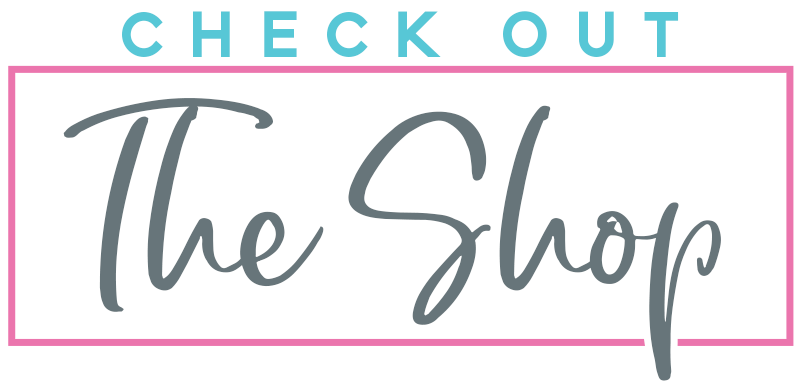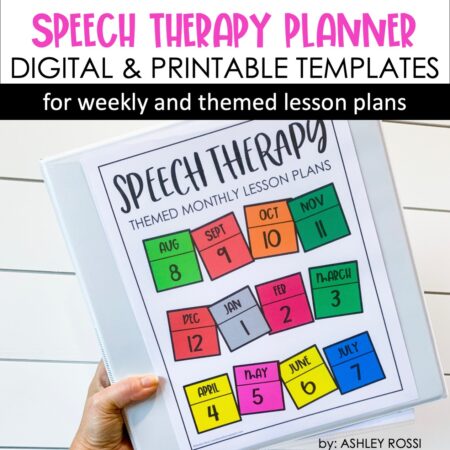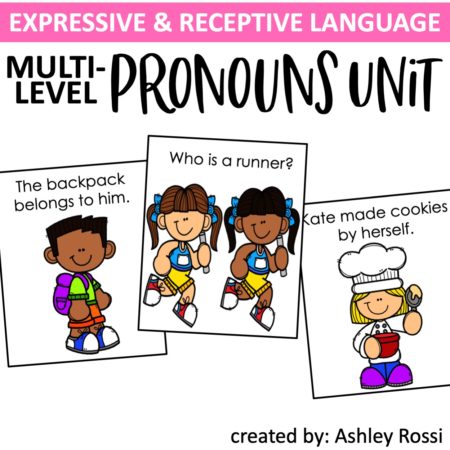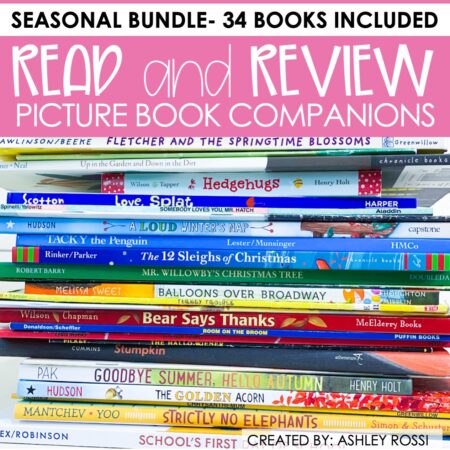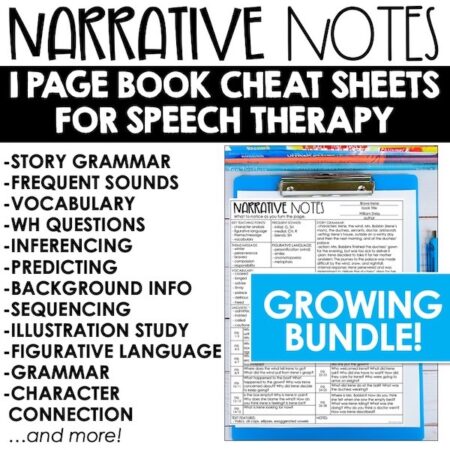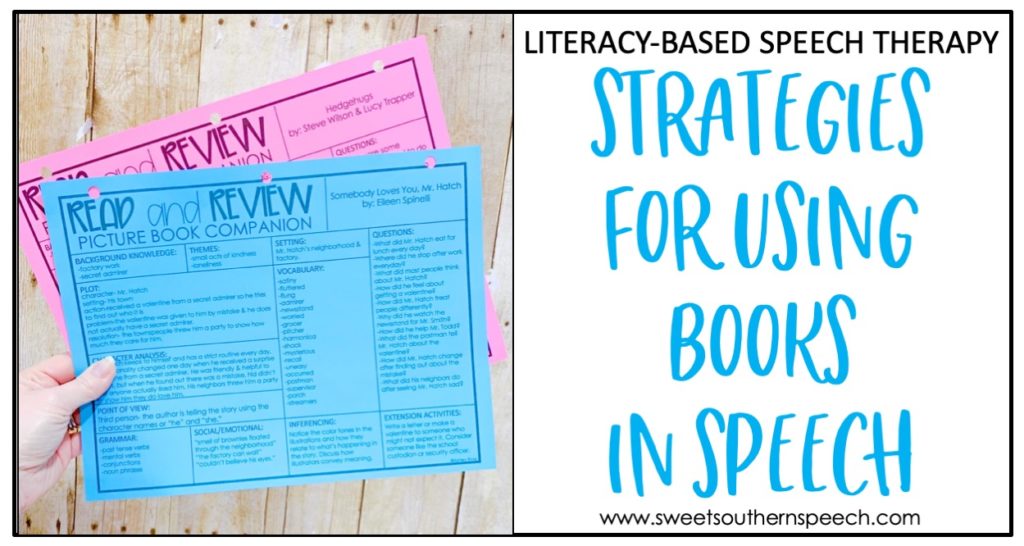
Using Book Companions in Speech Therapy
After many, many requests, I have finally created book companions that address the deeper reading comprehension issues our kids have with narratives. Most of what is on the market for book companions are heavily-themed activities RELATED to the book topic. Don’t get me wrong, there is a place for that. However, I set out to create an easy lesson planning template to use narratives in my speech room with more depth. You can see the seasonal book companion in my TPT store.
Early in my baby-SLP career, I’d read a book then ask recall questions. That was the extent of my “literacy-based speech.” yikes. Teachers would say, “Billy” can’t retell a story or sequence the events. So, I’d do more sequencing tasks. Hoping more practice would help it stick more. That’s not therapeutic intervention folks. However, once I started working on narrative structure, that’s when light bulbs started turning on. Over the last year, I’ve dug deep into the research of literacy-based speech issues. WHY are our kids still struggling to understand and retell the books we are reading. Answer- we need to go deeper, and you know what – the evidence shows we need to do it EARLY. Here are some effective strategies for narrative intervention in speech therapy.
Speech-language pathologists can effectively treat children with literacy disorders, (reading, spelling, and writing deficits including dyslexia) from preschool through adolescence. The impact of language disorders on literacy development and the components of effective reading instruction including narrative structure, phonological awareness, vocabulary awareness, morphological awareness, orthographic knowledge as well as reading fluency and comprehension.
Effective reading instruction can be cohesively integrated into speech-language therapy sessions in order to improve the literacy abilities of children with speech sound disorders, language disorders, and learning disabilities. Focusing on macrostructure (overall cohesion) and microstructure (sentence-level syntax) will improve narrative abilities in students.
But here’s some hard truth…ball poppers and sensory bins are fun, but they are NOT LITERACY ACTIVITIES. #sorrynotsorry
Literacy-Based Speech Therapy
What’s the big deal about Literacy-Based Speech Therapy?
The relationship between language deficits and reading disabilities has been examined extensively from several different perspectives and our role has been clearly defined by ASHA: “SLPs play a critical and direct role in literacy development, due to established connections between spoken and written language.”
“Evidence that children with language impairment (identified in preschool and kindergarten) are more likely than typically developing children to have subsequent reading disabilities in later grades indicates that language deficits precede and play a causal role in reading disabilities.” (Aram, et. al 1984)
“More than half of children with SSD experience difficulties with reading.” (Bishop & Adams, et. al 1990)
“52% of children with language impairments also have reading difficulties.” (Tomblin, et al 2000.)
“Problems in oral language and speech sound development are primary signs of risk for reading disorders.” (Nathan et. al(2004).
SLPs ARE UNIQUELY QUALIFIED:
Skilled readers effortlessly combine word recognition with text comprehension. Proficient readers are able to make meaning from text by, among others, inferring, questioning, visualizing, and activating prior knowledge.
Our kids just don’t do that.
We, as SLPs, must teach them HOW with explicit narrative instruction.
Tell your students what they need to be doing. Even with your littles. Tell them, “Good readers make a movie while they read.” “Good readers question while they are reading.” “Good readers think about the character’s emotions and feelings.”
Why? Because they aren’t automatically doing it. This is where the breakdown of comprehension occurs.
WHAT WE NEED TO BE DOING:
Oral narrative interventions that explicitly teach macrostructure, and include repeated telling, retelling and generating of stories using visual scaffolds, such as icons and graphic organizers including storyboards and planners yield a statistically significant, large effect (d =.73 – 1.57) for macrostructure skills (Petersen, 2010 in Glisson, Leitão & Claessen, 2019).
BACKGROUND KNOWLEDGE: Depending on the book and your student’s life experiences, you may need to probe and review for their prior knowledge of concepts in the book. For example, if you’re reading “Brave Irene” and you live in Florida, your students may not have experience with a snowstorm.
VOCABULARY: What tier 2 words are important for understanding the story?
PLOT: Also referred to a story grammar, this is the organization of the narrative and the most basic form of comprehension. Readers need to know who is involved in the action and where the story is taking place. Understanding problems, conflicts, and resolutions. For early learners: beginning-middle-end. For older learners: somebody-wanted-but-so-the or character-setting-action-problem-attempts-resolution. Make sure students understand that there are different parts to every story – they need to be able to identify these parts.
Expository Text Features: sequence, description, listing, problem-solution, compare/contrast, cause-effect, and persuasion.
THEME: What is the “message” the author wants us to take away?
SETTING: The time and place in which the story takes place. Visualizing the setting is important to comprehension.
POINT OF VIEW: Point-of-view is essential to character development. It helps the reader think about different perspectives. Knowing who is talking can help the reader better understand the story.
WH AND RECALL QUESTIONS: Asking literal & inferential questions to monitor understanding of content, text structure, and themes. Research shows Why-questions and How-procedural questions elicit longer, multiword responses from students. Be cautious of inferential questions post-reading as they rely on memory skills.
INFERENCING: When you infer, you are using your background knowledge along with the clues from the text and pictures to find out what is happening in the story. You are figuring out what the author didn’t tell you directly.
SOCIAL/EMOTIONAL: How do the characters grow or change? How do they react to things? Try to imagine how the characters think or feel about a situation.
EXTENSION ACTIVITIES: How can you extend the book experience to activities that align with your learning objectives? This can be any activity post-reading (craft, written, etc).
How Do We Implement Intervention:
I created lesson plan templates and strategic activities to address all of these goals and to give more effective strategies for using book companions in Speech Therapy. If you’re familiar with my language bookmarks, these go a few steps forward and several steps deeper. I’ve done all the work for you, so you don’t have to pull a book off the shelf and wonder what to do. They also come with student activity pages, sticky notes, an analysis page for progress monitoring, and educator guides with standards addressed. These evidence-based strategies and activities will focus your narrative intervention in speech therapy.
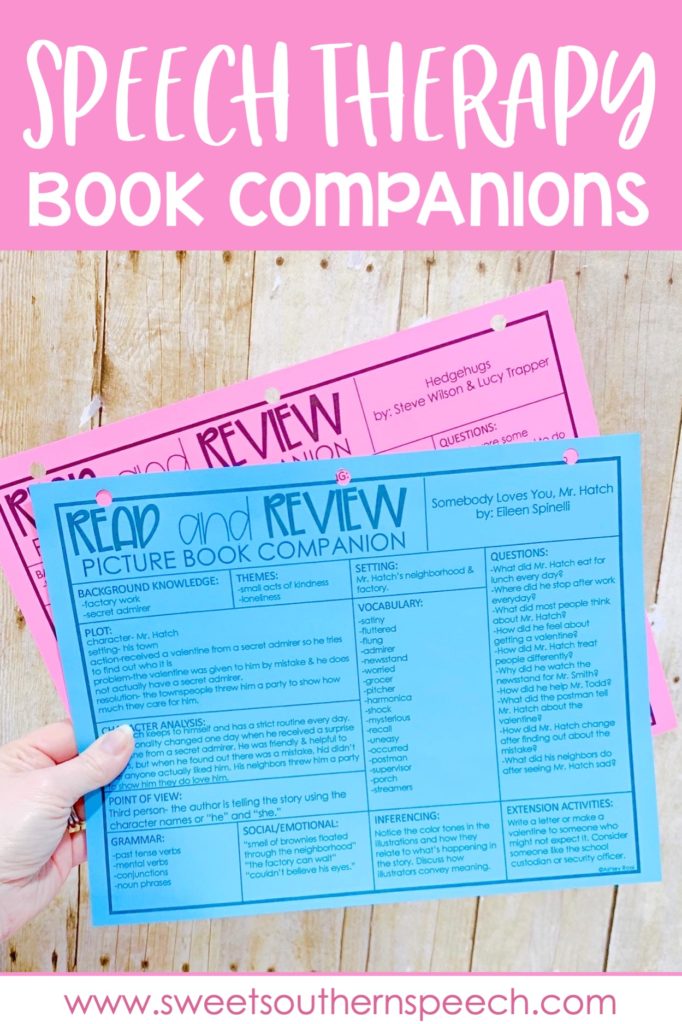
You can check out these Speech Therapy Book Companions in my Teachers Pay Teachers store.
Make sure to follow my Instagram account: @literacybasedspeech where I share books and how you can use them in your sessions.
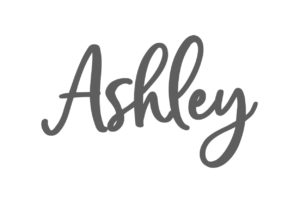
YOU MAY ALSO LIKE
-
6 Thanksgiving Books For Speech Therapy
Thanksgiving themed books are fun in my Speech room. Here are some suggestions for my…
-
Winter Books For Speech and Language
Arctic animals, snowmen, and hibernation are great winter themes to focus on in speech. I…
-
Using Fall Books In Speech Therapy
Fall books to use in Speech Therapy What books do you pull out for the…
-
Summer Books For Speech Therapy
Language Bookmarks for Summer Books in Speech Summer months are finally here and I'm excited…
